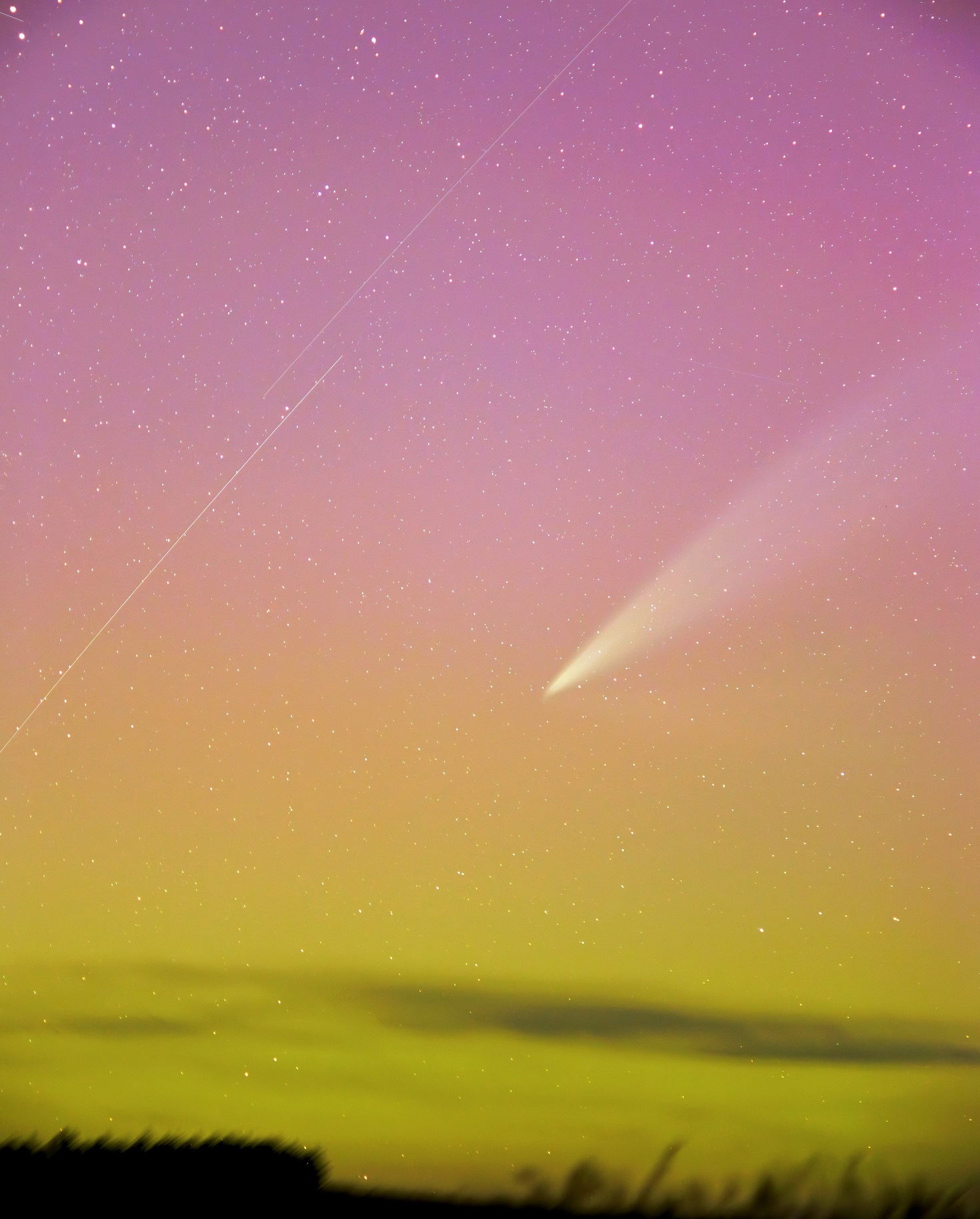
I heaved my heavy telescopes into the car, and collected my friend Shaun — our destination: Middlemarch, a trusted dark-sky haunt.
Clouds greeted us as we arrived. However, we didn't give up. We headed towards Lake Mahinerangi, where we found a perfect observing spot beside a sheep-shearing pen. It was serene, it was dark, it was ideal. Almost. As we set up the telescopes, a ute pulled up. Two locals, cigarettes and beers in hand, looked at our equipment with curiosity.

"Only photons," I replied, and after a shared laugh, they bid us good luck and drove off into the night, leaving us to our stargazing adventure, the sound of Garth Brooks fading as the ute receded.
With telescopes aligned, we awaited the onset of darkness. Anticipation turned to wonder as the first images appeared. There it was—what remained of C/2024 G3, a hazy streak against a backdrop of twinkling stars.
As the night darkened, the pictures improved, each exposure showing more of the comet's disintegrating tail.
But then, disaster. Just as the comet started to reveal its fractured beauty, the sky conspired against us. A green and red glow began creeping in from the south—the aurora australis had decided to put on a show, right where the comet was. Frame after frame, the southern lights washed out carefully composed images, adding an otherworldly wash of dancing light.
Have you ever tried to capture a disintegrating comet while the aurora shimmers in front of it? Let me tell you, it is like photographing a soap bubble in a fireworks display.
I had to laugh as we packed up in frustration (after the aurora faded, of course!). The universe doesn't just write the rules — it has a wicked sense of humour.











